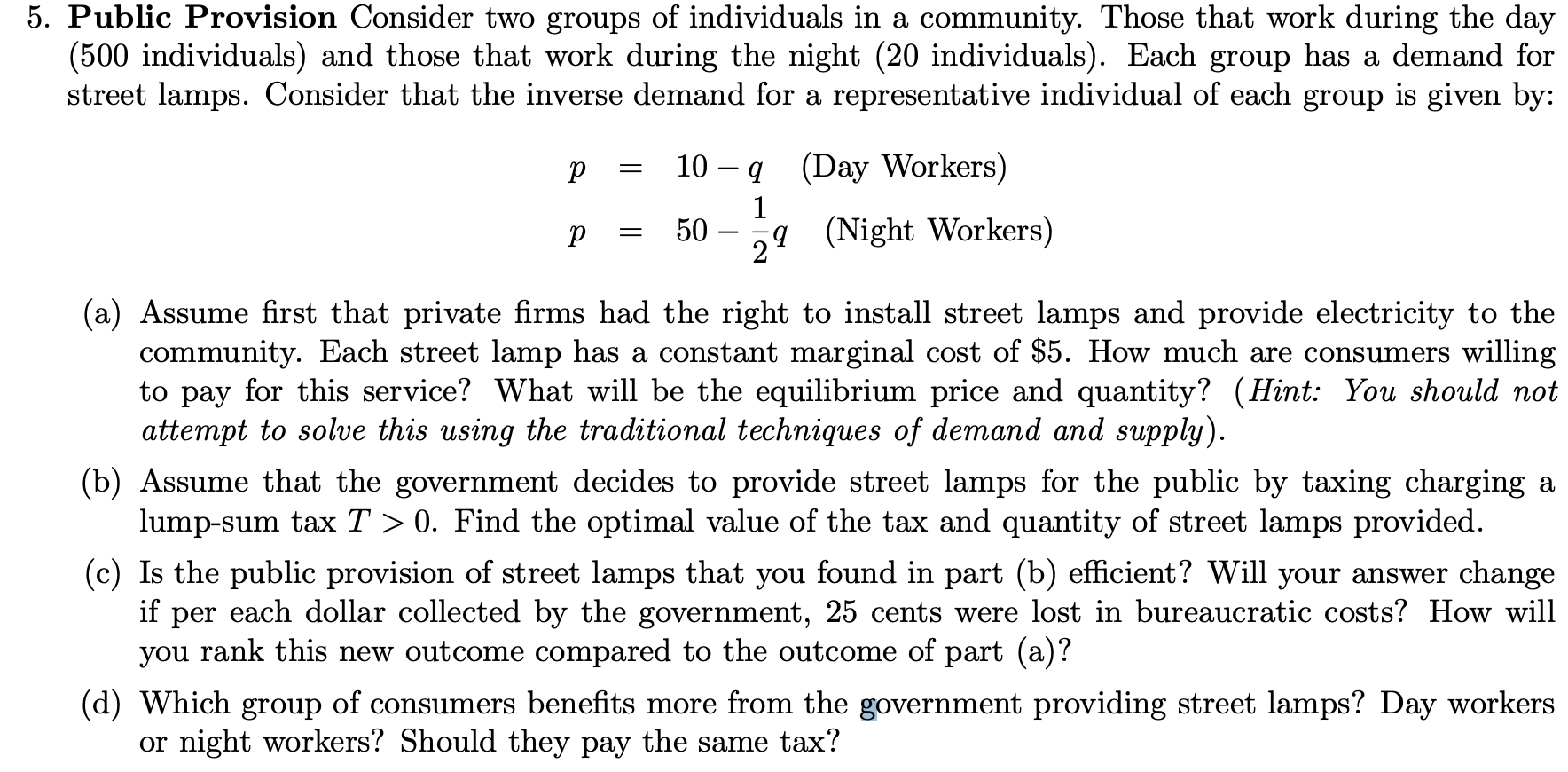 That is the original question, so I don't know what more I can add. What additional information do you need to solve this?
That is the original question, so I don't know what more I can add. What additional information do you need to solve this?
5. Public Provision Consider two groups of individuals in a community. Those that work during the day (500 individuals) and those that work during the night (20 individuals). Each group has a demand for street lamps. Consider that the inverse demand for a representative individual of each group is given by: = 10 9 (Day Workers) 1 50 29 (Night Workers) = (a) Assume first that private firms had the right to install street lamps and provide electricity to the community. Each street lamp has a constant marginal cost of $5. How much are consumers willing to pay for this service? What will be the equilibrium price and quantity? (Hint: You should not attempt to solve this using the traditional techniques of demand and supply). (b) Assume that the government decides to provide street lamps for the public by taxing charging a lump-sum tax T > 0. Find the optimal value of the tax and quantity of street lamps provided. (c) Is the public provision of street lamps that you found in part (b) efficient? Will your answer change if per each dollar collected by the government, 25 cents were lost in bureaucratic costs? How will you rank this new outcome compared to the outcome of part (a)? (d) Which group of consumers benefits more from the government providing street lamps? Day workers or night workers? Should they pay the same tax? 5. Public Provision Consider two groups of individuals in a community. Those that work during the day (500 individuals) and those that work during the night (20 individuals). Each group has a demand for street lamps. Consider that the inverse demand for a representative individual of each group is given by: = 10 9 (Day Workers) 1 50 29 (Night Workers) = (a) Assume first that private firms had the right to install street lamps and provide electricity to the community. Each street lamp has a constant marginal cost of $5. How much are consumers willing to pay for this service? What will be the equilibrium price and quantity? (Hint: You should not attempt to solve this using the traditional techniques of demand and supply). (b) Assume that the government decides to provide street lamps for the public by taxing charging a lump-sum tax T > 0. Find the optimal value of the tax and quantity of street lamps provided. (c) Is the public provision of street lamps that you found in part (b) efficient? Will your answer change if per each dollar collected by the government, 25 cents were lost in bureaucratic costs? How will you rank this new outcome compared to the outcome of part (a)? (d) Which group of consumers benefits more from the government providing street lamps? Day workers or night workers? Should they pay the same tax
 That is the original question, so I don't know what more I can add. What additional information do you need to solve this?
That is the original question, so I don't know what more I can add. What additional information do you need to solve this?





